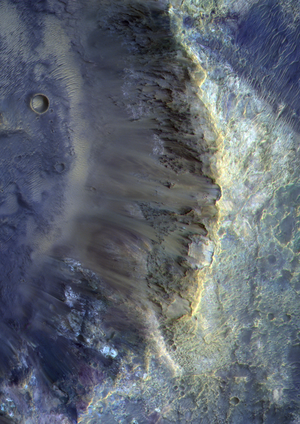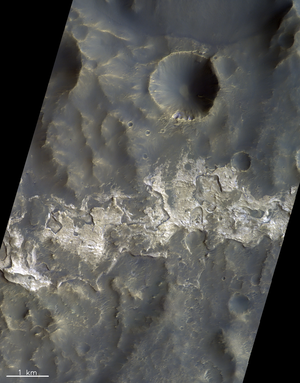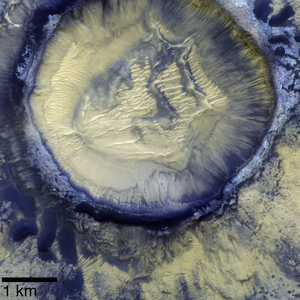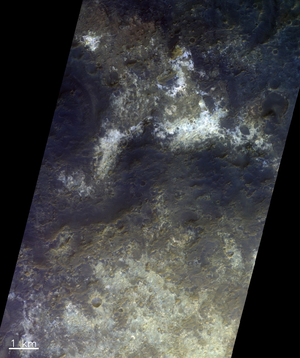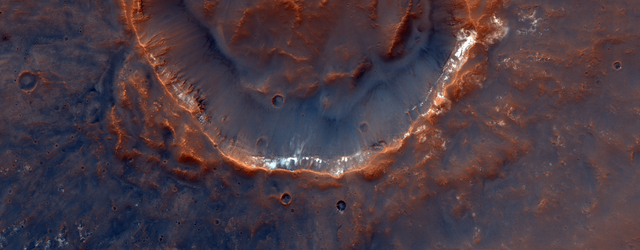
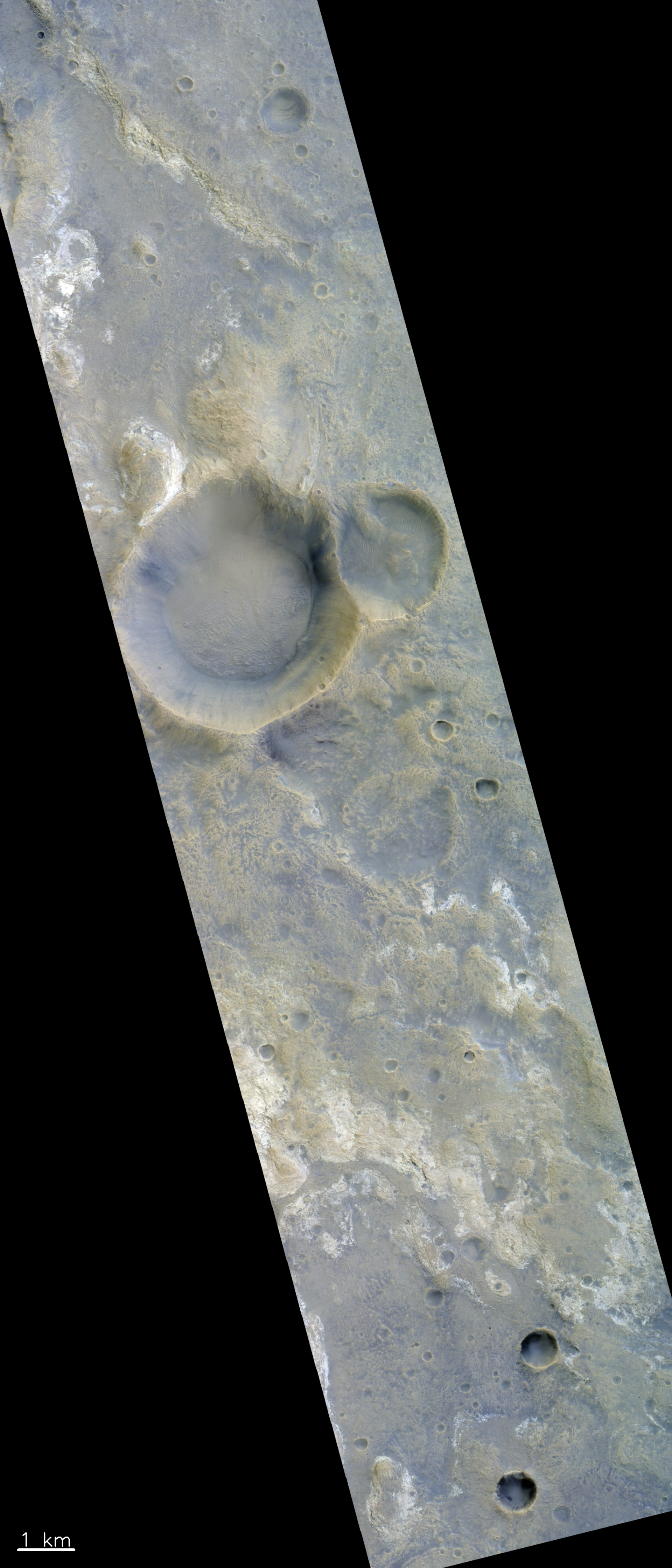
A well-preserved crater
This image was taken by the Colour and Stereo Surface Imaging System (CaSSIS) onboard the ESA-Roscosmos ExoMars Trace Gas Orbiter on 18 November 2018. Just above centre is a well-preserved 4 km-wide crater. This slice of Mars sits just to the northeast of largest well-preserved impact basin on Mars, Hellas, in the planet’s southern highlands.
The colour capability of CaSSIS reveals exposures of light-toned bedrock in this colour-composite view. The light-toned bedrock, observed extensively throughout the region, may be associated with the formation of some of the most ancient rocks of the Hellas basin – between 3.7 and 4.1 billion years ago. Many exposures of this terrain show evidence of being altered chemically by water, with phyllosilicate clays being one of the most common minerals formed during this early period of martian history.
The image is centred at 28.36ºS/79.75ºE. North is up.

